When we think of the heavy hitters in the history of sculpture, usually it’s the Italians dominating center stage. Really, who could overlook the brilliant creations of Bernini, Michelangelo and Donatello (not the Mutant Ninja Turtle versions). However, some of my favorite sculptures of all time were made by French artists. When speaking of French sculptors, most people immediately think of Rodin, but France’s sculptural offerings are so much more vast than just this one artist.
Many classical works of art could be viewed as the incipience of the current Fantastic art/Imaginative Realism communities – kind of like the great-great Art grandmas and grandpas of us all. In these works, I find inspiration and challenge in a way – to keep questing for how to bring the best I have to contribute to the ongoing current of creativity.
One of my favorite places to lose myself in artistic ecstasy is the French Sculpture wing at Le Louvre and of course, the main atrium at the d’Orsay. Since we haven’t been able to visit my favorite inspirational sculptures in person for a very long time now, I thought I would share some of them here.
Emmanuel Frémiet
While his name may not bring to mind any particular sculptures for most, Frémiet (1824 – 1910) probably should have a little spot on every fantasy artist’s inspiration board. I’d been in love with his faun sculpture for many years before his entire body of work began to register on my radar and then it was an explosion of “wow!!! moments.”
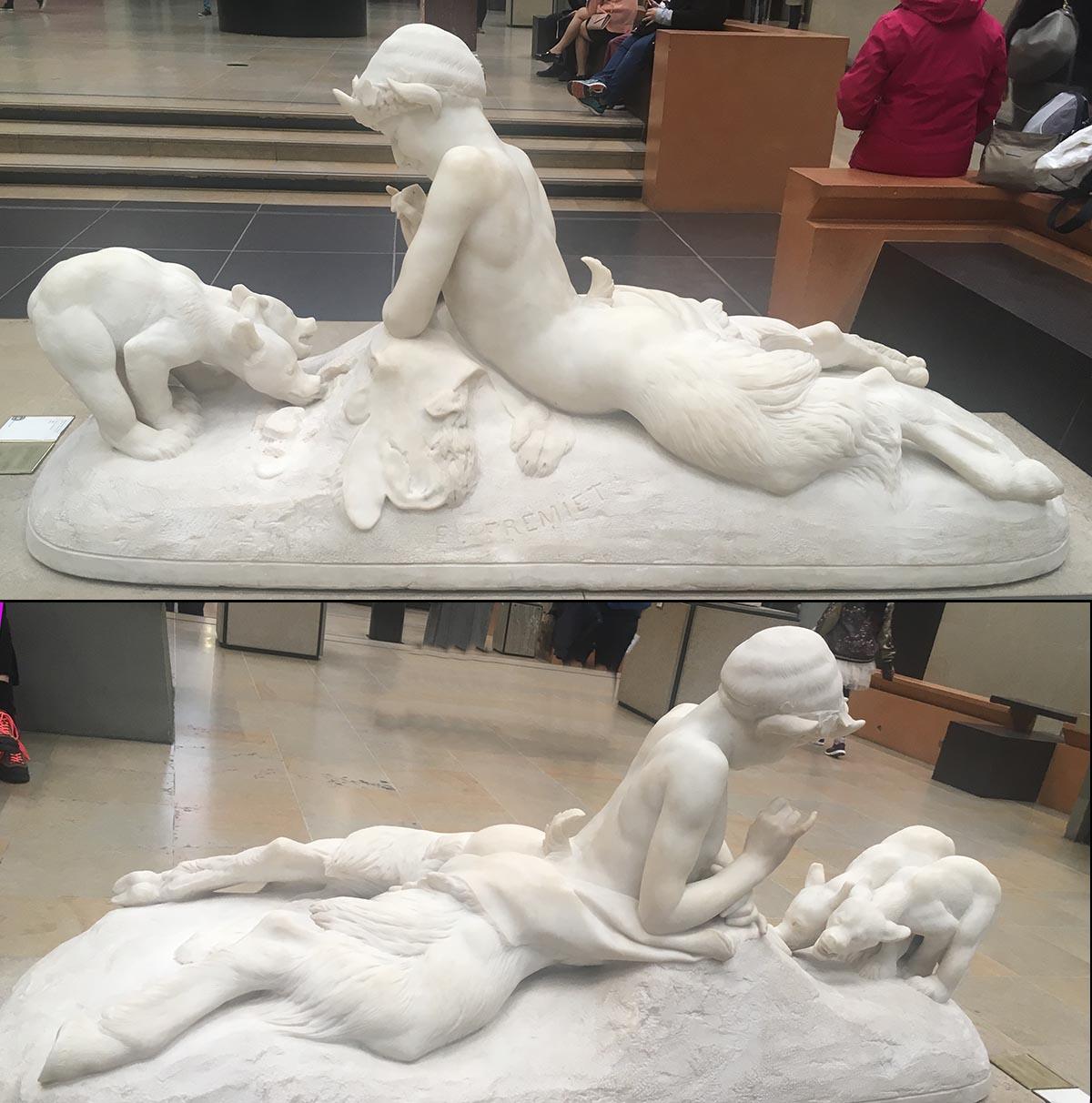
I love that this sculpture is just as delightful (perhaps more so) from the back as it is from the front and side views. The way Frémiet has depicted the legs splayed out in such an animalistic manner combined with the expressive hand, his upright upper back and the sense of weight in the body emphasized by raised shoulders…this being just radiates the essence of faun-ness. He is completely believable as a creature of the forest as delighted by the cubs as they are delighted with his gift of the honeycomb.


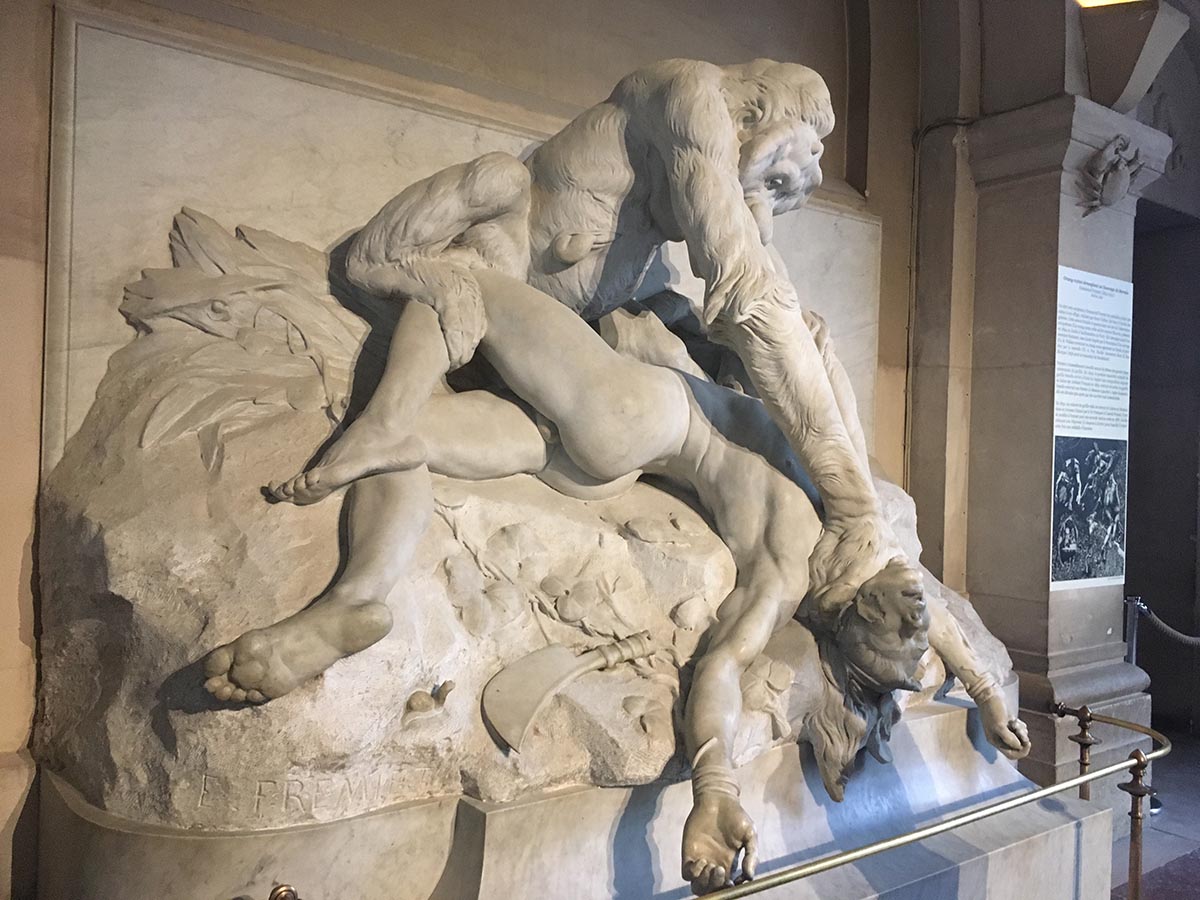
The story on this sculpture can be seen by close observation. The mother orangutan has been grievously wounded on her side in the struggle with the warrior, whose face has been slashed. The assailant’s weapon is seen lying near the scene of the struggle.
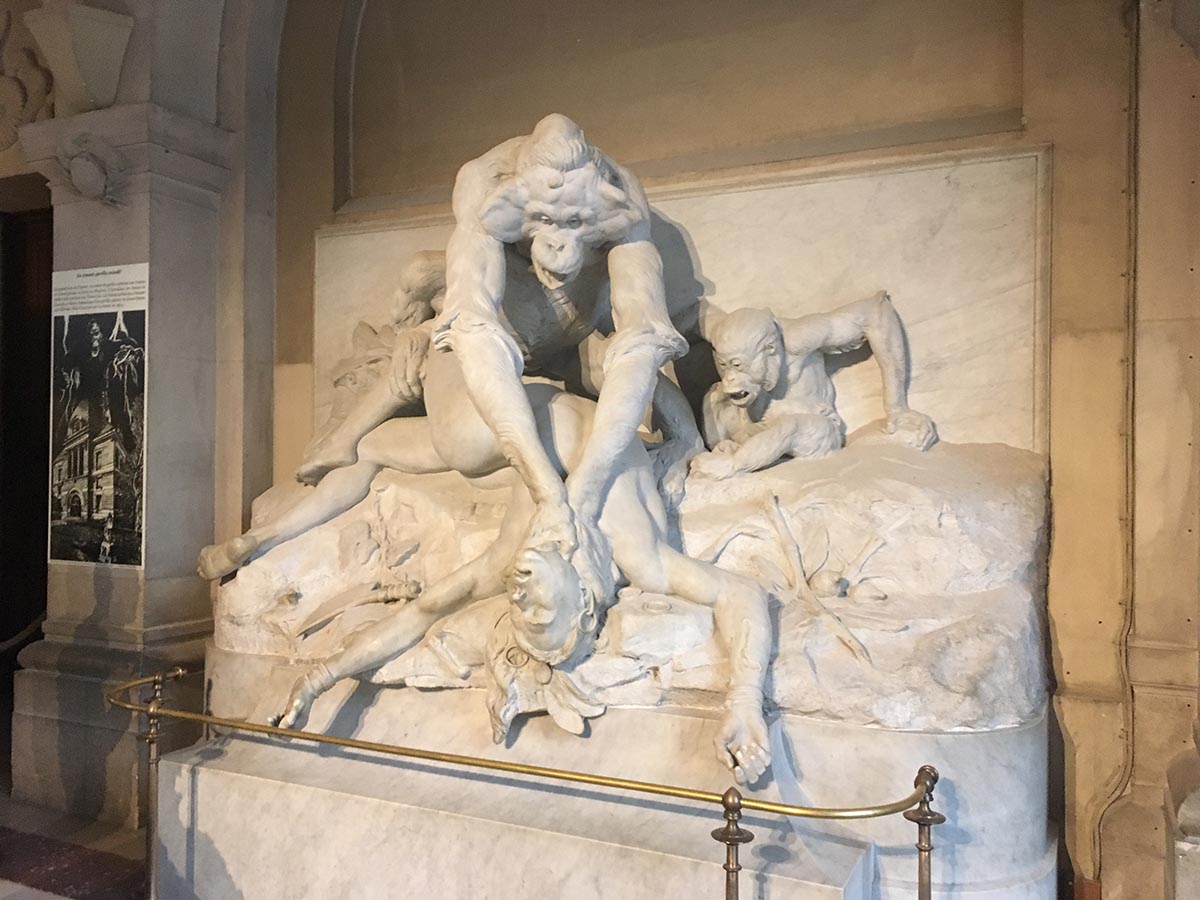
One presumes from the baby orangutan’s silent scream that the warrior was going for the baby and the mother was injured, perhaps fatally, protecting her young. Despite the piece being designed to be against a wall, the moment and each character’s role is captured emotionally and dramatically in the dynamism of the composition.
And a few extra Frémiet delights:
Albert-Ernest Carrier-Belleuse
Ah, my long love affair with the magnificent Carrier-Belleuse (1824 – 1887) began when John Fleskes introduced us at a gathering once. Well, really, John brought us to the Legion of Honor Museum on a visit to San Francisco. You never forget the moment of falling in love: I walked around a corner in the museum, looked a little to the left and there she was – Carrier-Belleuse’s “Mary, Queen of Scots.” I stopped in my tracks and pretty much stopped breathing. A life-sized terra cotta (fired clay) bust sequestered in a glass case, she stood with an elegant grace and beauty all her own. I’ve loved sculptural surface embellishment since my high school days, but this took it to a whole new stratosphere. I was entranced and Carrier-Belleuse immediately became one of my art mentors.
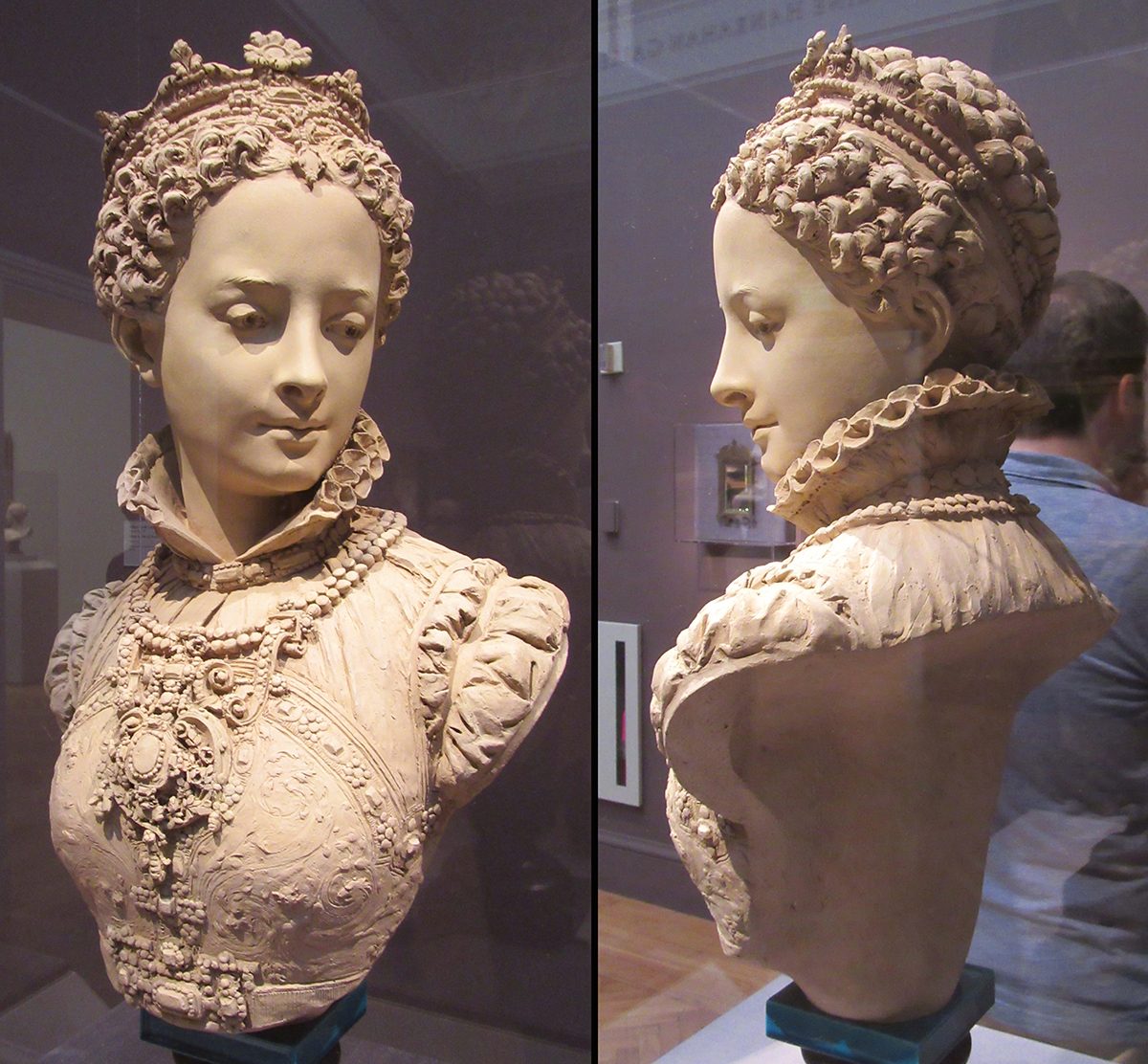


James Pradier
James Pradier (1790-1852), born Jean-Jacques Pradier, created a body of monumental marble sculptures depicting mythological themes. One that we are perpetually taken with is his “Satyr and Bacchante.” His technical mastery and the beauty in his rendering of both beings is astounding.
Details he added to the Satyr, showcasing a beautiful male form but with adaptations that create a believable mythological creature:
From the front view, the sculpture appears to represent another abduction – a common theme in classical art.
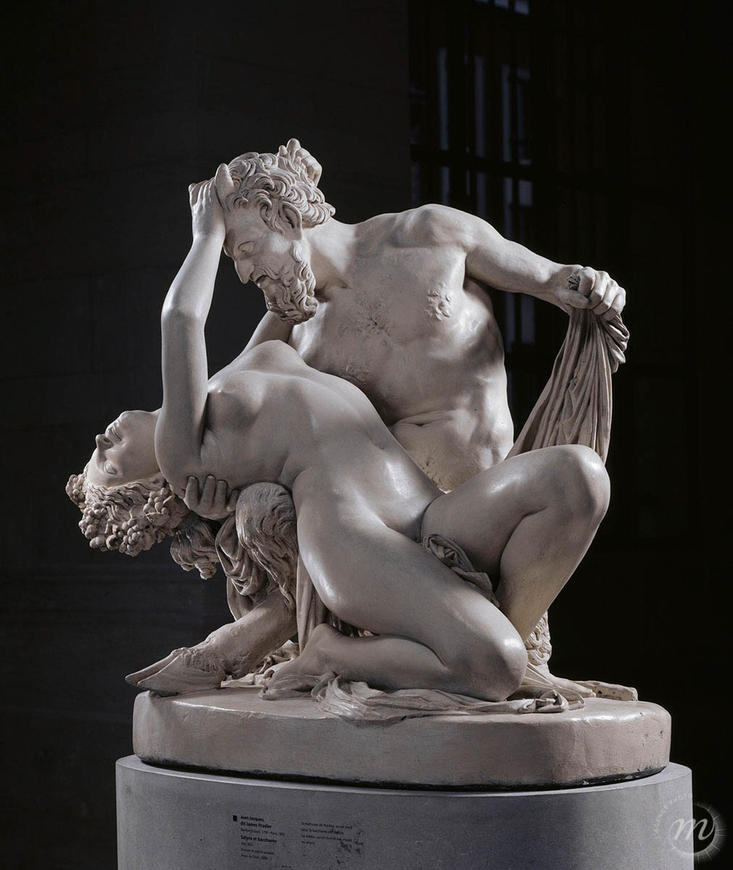
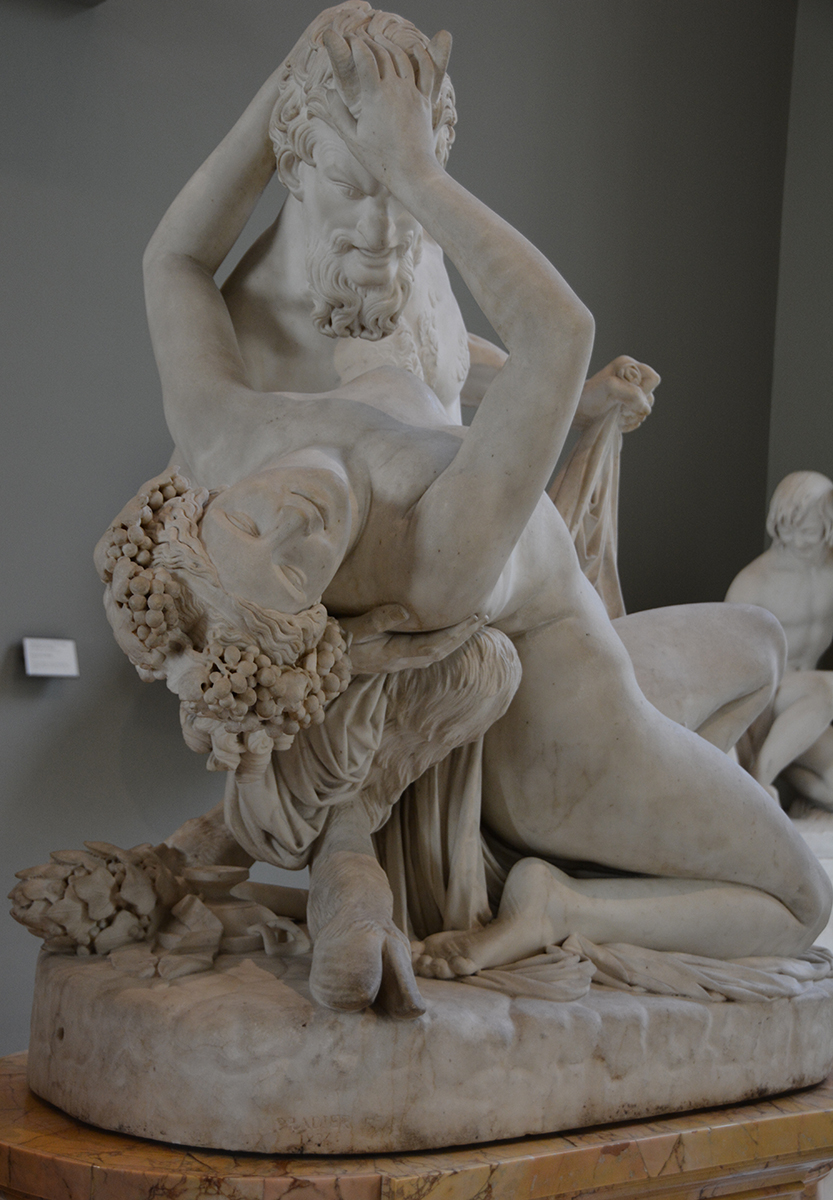
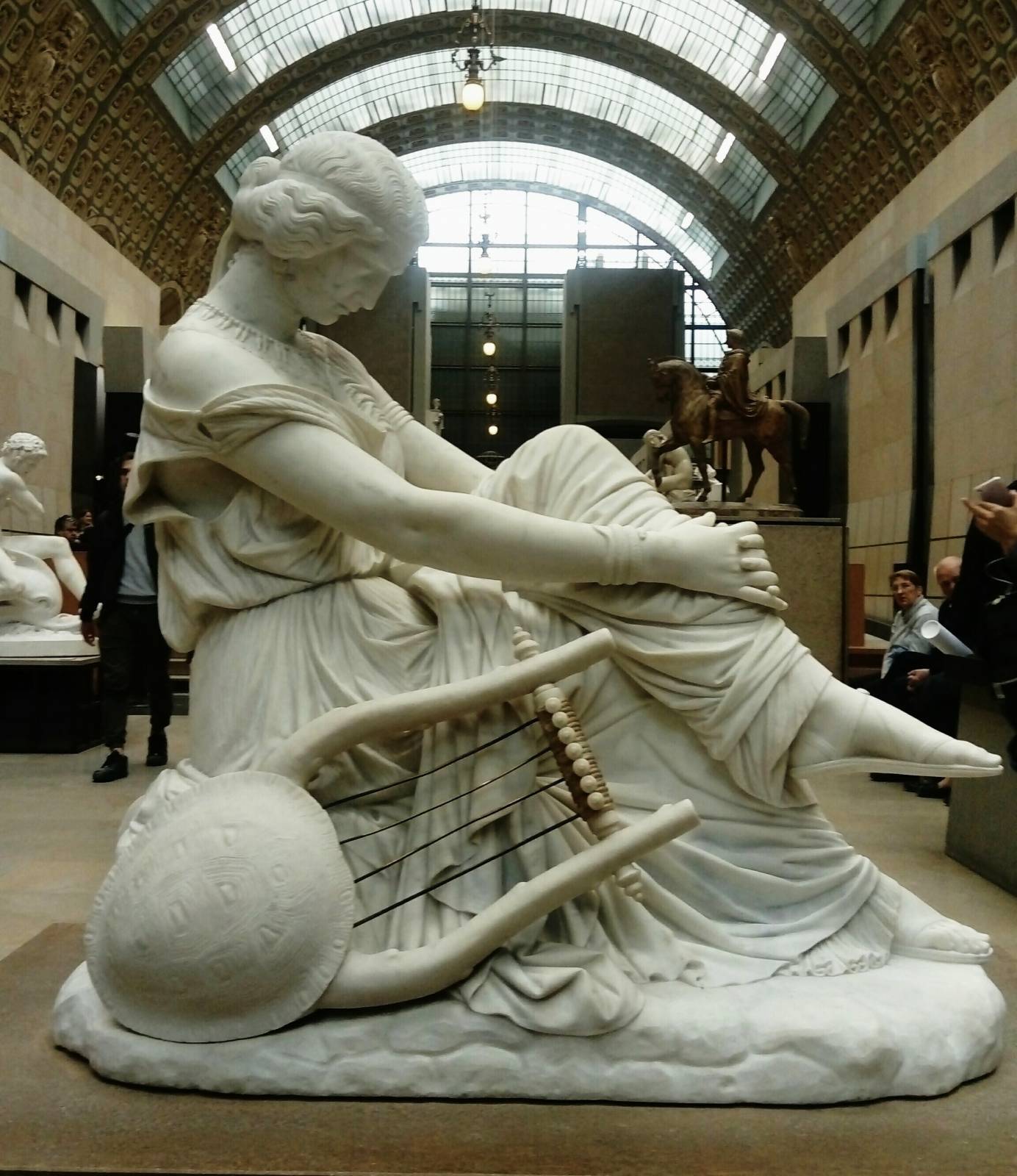
Keep creating!


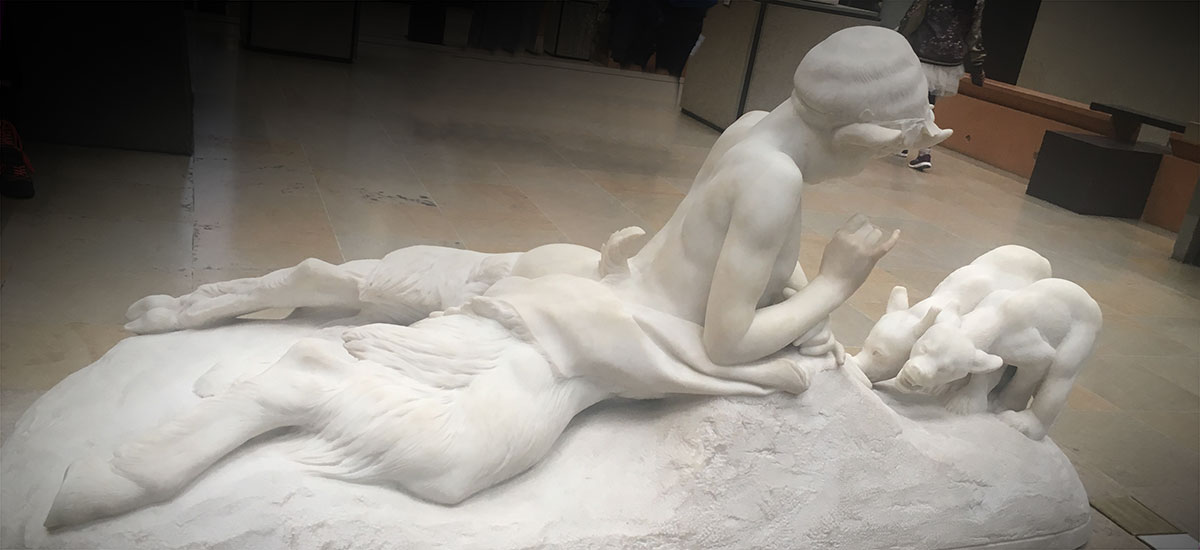
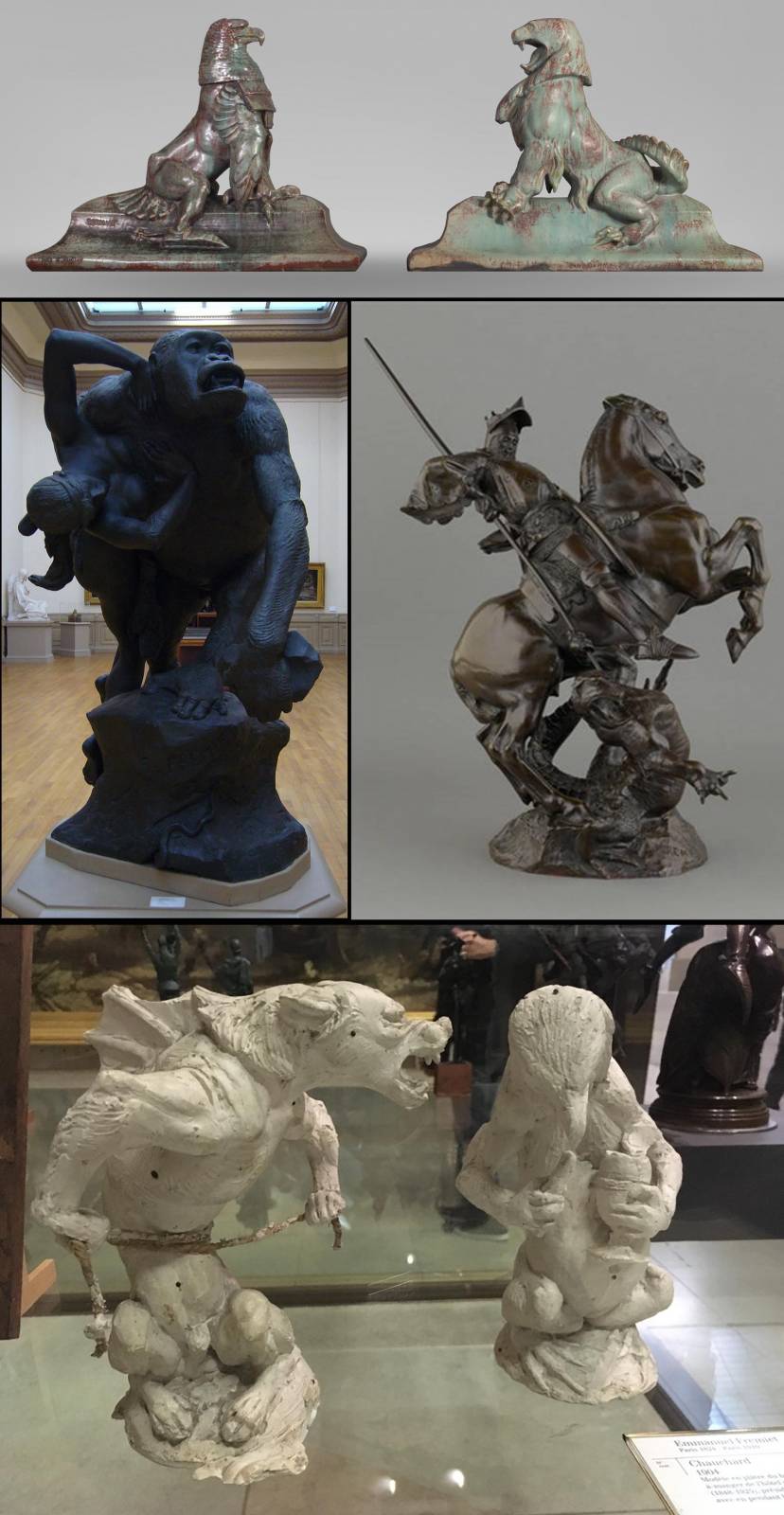
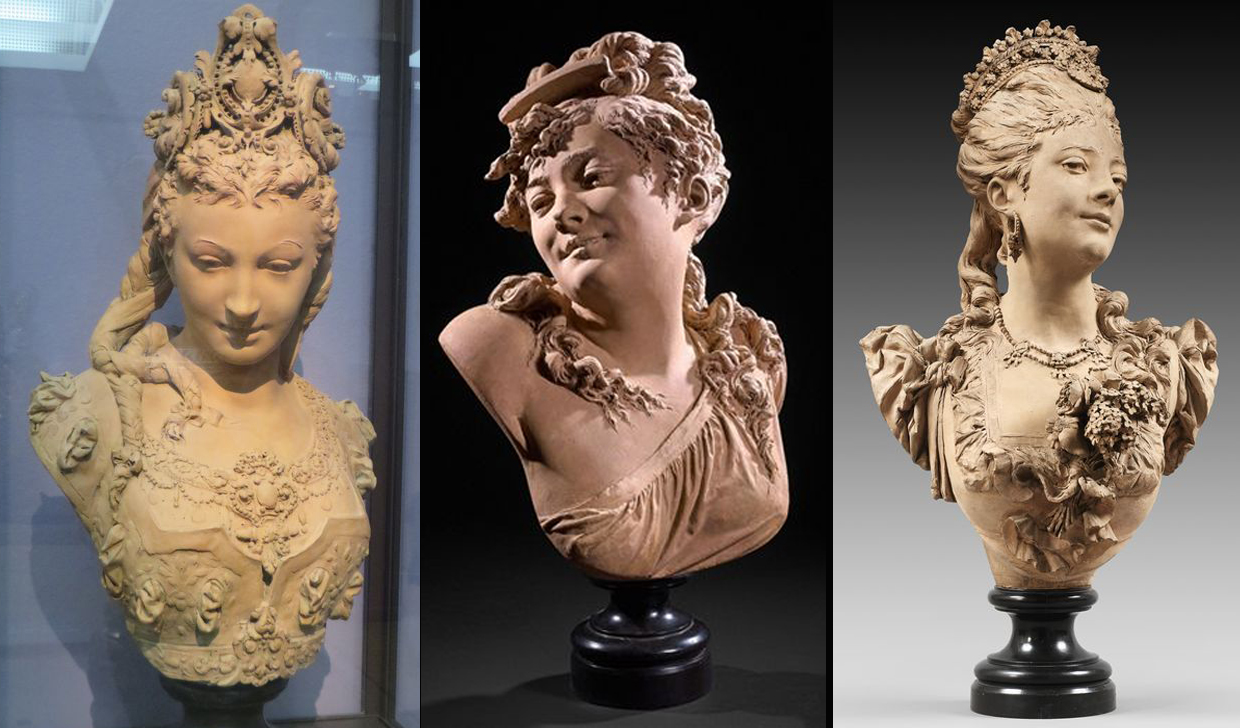
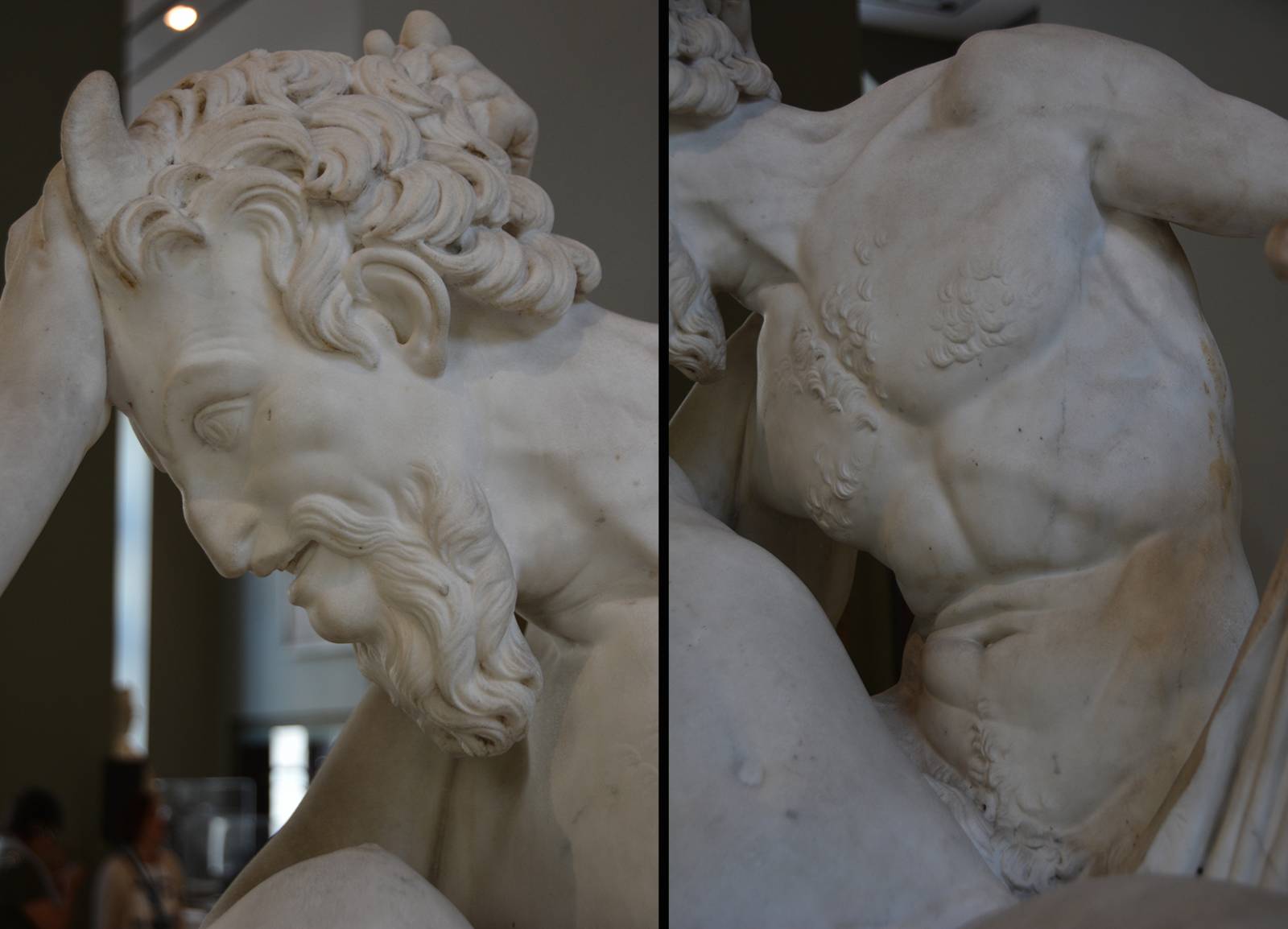
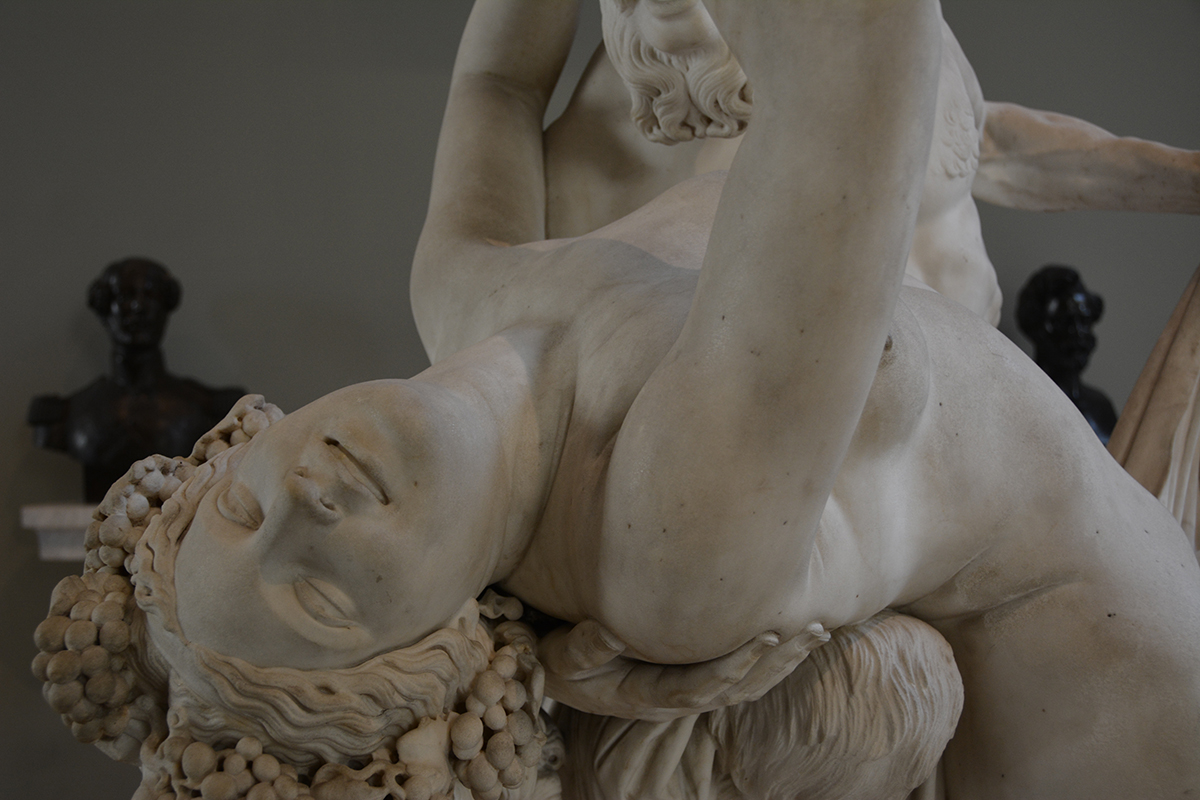

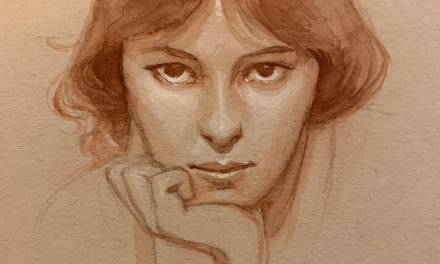
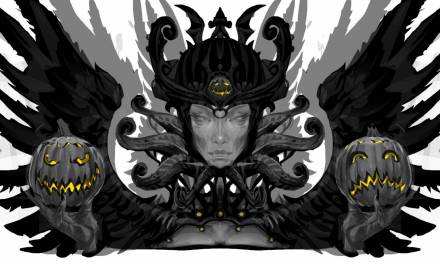
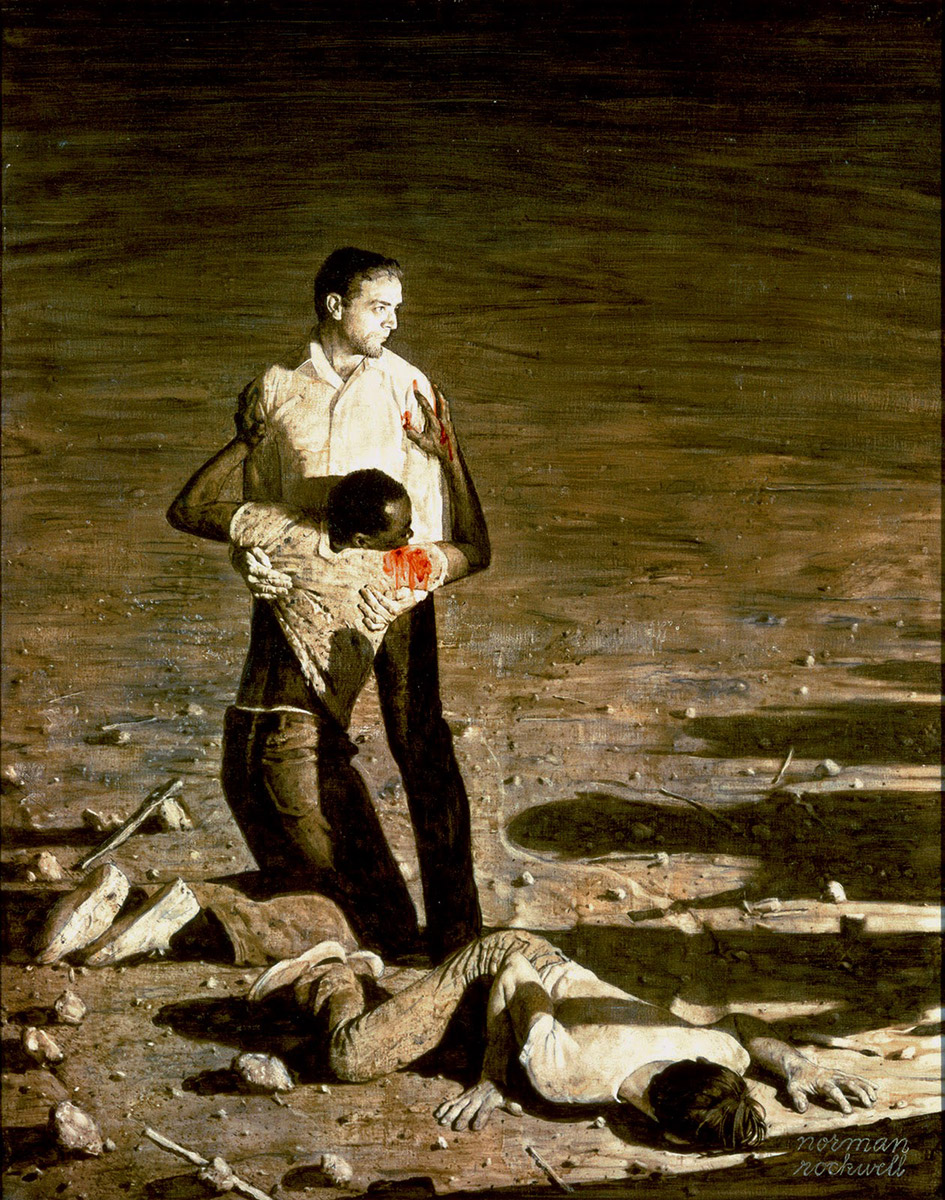


Recent Comments